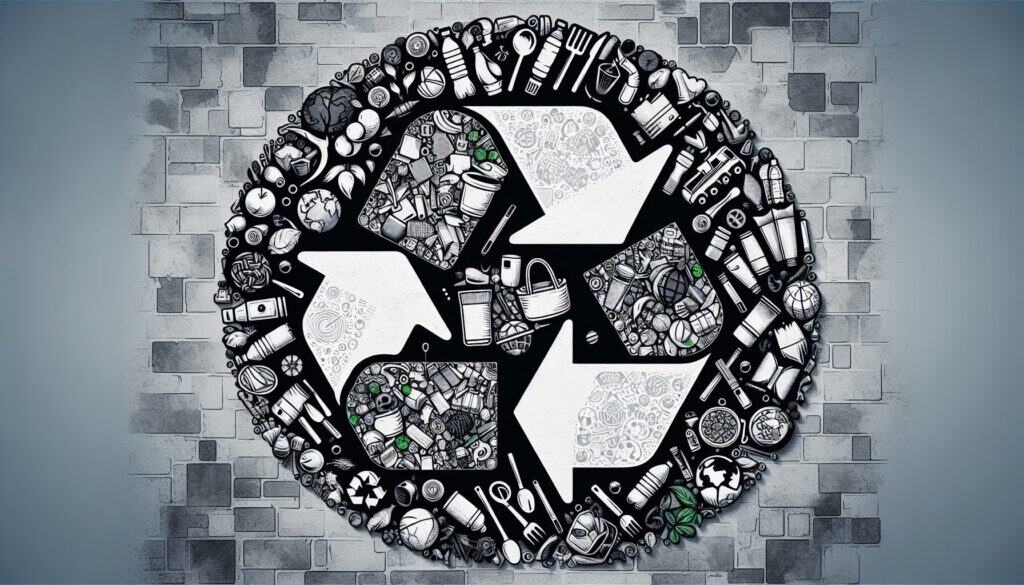Identifier et éliminer les activités qui consomment des ressources mais n'apportent pas de valeur ajoutée au client.
- Méthodologies : Clients et marketing, Économie, Lean Sigma, Fabrication, Gestion de projet, Qualité
Réduction des déchets (Muda)

Réduction des déchets (Muda)
- Amélioration continue, Efficacité, Production allégée, Production allégée, Amélioration des processus, Sept déchets, Cartographie de la chaîne de valeur, Stratégies d'élimination des déchets, Réduction des déchets
Objectif :
Comment il est utilisé :
- Part of the Lean philosophy, Muda focuses on categorizing and systematically removing non-value-adding activities from processes. The common sept déchets (often expanded to eight) are: Transportation, Inventory, Motion, Waiting, Overproduction, Over-processing, and Defects (plus Non-utilized Talent).
Avantages
- Permet d'accroître l'efficacité, de réduire les coûts et d'améliorer la qualité ; Améliore la satisfaction des clients en se concentrant sur la valeur ; Simplifie les processus ; Donne aux employés les moyens d'identifier et d'éliminer les gaspillages.
Inconvénients
- Il peut être difficile d'identifier toutes les formes de gaspillage, en particulier dans les environnements non manufacturiers ; il faut un changement culturel en faveur de l'amélioration continue ; l'élimination de certains "gaspillages" (par exemple, les inspections nécessaires) sans examen approfondi peut être préjudiciable.
Catégories :
- Économie, Lean Sigma, Fabrication, Résolution de problèmes, Qualité
Idéal pour :
- Améliorer l'efficacité et la rentabilité en supprimant systématiquement les activités sans valeur ajoutée de tout processus.
Waste Reduction (Muda) methodology finds extensive applicability across diverse industries such as manufacturing, healthcare, software development, and logistics, where the demand for efficiency and quality is paramount. In manufacturing settings, for example, organizations can identify and minimize overproduction by optimizing production schedules and aligning output with actual market demand; in healthcare, reducing patient wait times and unnecessary steps in workflows can substantially enhance service delivery and patient satisfaction. This approach is particularly effective during the design and development phases of a product, where teams can analyze workflows and processes to uncover inefficiencies that may lead to cost overruns or delays. Participants typically include cross-functional teams composed of engineers, designers, quality assurance professionals, and management, who collaboratively assess processes to identify wasteful activities. By involving employees at all levels, organizations cultivate a culture of continuous improvement, where individuals are encouraged to contribute their ideas for eliminating inefficiencies. This methodology not only leads to direct cost reductions through decreased resource utilization and waste but also enhances product quality by reducing defects and rework, creating a win-win scenario for both the business and its customers. Engaging in this systematic waste reduction builds resilience, enabling organizations to adapt more readily to market changes while maintaining a focus on delivering value.
Principales étapes de cette méthodologie
- Identifier la valeur du point de vue du client.
- Map the value stream and visualize current processes.
- Evaluate each step to categorize waste according to the seven wastes.
- Develop a plan to eliminate non-value-adding activities.
- Implement changes to improve flow and create a more efficient process.
- Measure the impact of changes and analyze the results.
- Sustain improvements through continuous monitoring and adjustments.
Conseils de pro
- Conduct root cause analysis for each waste category to identify the underlying issues and eliminate them effectively.
- Implement Continuous Improvement (Kaizen) initiatives that encourage team members to identify and propose waste reduction strategies regularly.
- Utilize Value Stream Mapping to visualize processes and uncover hidden waste, enhancing decision-making for process improvements.
Lire et comparer plusieurs méthodologies, nous recommandons le
> Référentiel méthodologique étendu <
ainsi que plus de 400 autres méthodologies.
Vos commentaires sur cette méthodologie ou des informations supplémentaires sont les bienvenus sur le site web de la Commission européenne. section des commentaires ci-dessous ↓ , ainsi que toute idée ou lien en rapport avec l'ingénierie.
Contexte historique
1950
1958
1960
1960
1960
1960
1963
1950
1950
1960
1960
1960
1960
1962
1970
(si la date est inconnue ou n'est pas pertinente, par exemple "mécanique des fluides", une estimation arrondie de son émergence notable est fournie)















Articles Similaires
Questionnaires sur les troubles musculo-squelettiques
Tests à plusieurs variables (MVT)
Analyse de régression multiple
Systèmes de capture de mouvement
Méthode MoSCoW
Test de la médiane de Mood